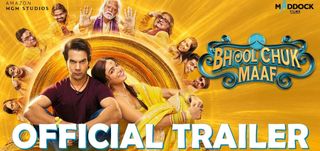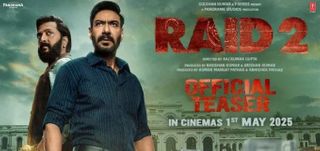
Rang De Basanti Movie Review
Check this dialogue "ek paav past mein, ek paav future mein, isi liye hum apne present par moot raha hai" (one leg is on the past, one on future, that's why we are pissing on our present). And when Aamir utters it in a frivolous fashion onscreen it sounds more tongue-in-cheek than cheesy. As original as this dialogue, Rang De Basanti dabbles with the past and the present of this country for a progressive future.
Widely promoted as a 'not-another-period film' by Aamir Khan, RDB has its fair share of pre-independence footage as well, but its amalgamation with contemporary times is what makes the film different from being another historical episode. It's more about learning from history than just teaching history.
The movie opens to the hanging of Bhagat Singh in the 1940s and transfers itself to present-day London where a smalltime filmmaker Sue (Alice Patten) wants to make a documentary film on the autobiographical diary of her grandfather who was a soldier in the British Army.
Unable to find funds in UK she arrives in India where she comes across a bunch of students from the Delhi University and finds the cast of her film in them. Initially reluctant, she convinces the group to play freedom-fighters Bhagat Singh (Siddharth), Chandrashekhar Azad (Aamir Khan), Rajguru (Sharman Joshi), Ashfaqullah Khan (Kunal Kapoor) and Ram Prasad Bismil (Atul Kulkarni) for her document-drama dream. Through the making of the film, these directionless students are imbibed with a sense of responsibility towards their country.
From the outer surface, RDB may appear like another film on the 'fight-against-the-system'. But it looks at the scenario from the point of view of the present generation youth who has lost all hopes for any improvement. So the approach is more realistic than being melodramatically filmi, to which the audience can relate with.
Audiences familiar with recent films like The Legend of Bhagat Singh will undoubtedly have a sense of deja vu as a major portion of Bhagat Singh's history is recreated in the making of the documentary in this film. But the beauty of the script lies in the way in which writer Rensil D'Silva draws a parallel between the past and the present. The screenplay in the second half is essentially and intentionally inspired from pages of history. Like Madhavan's MIG airplane crash is shown analogous to the death of Lala Lajput Rai, the killing of the defense minister is equivalent to assassination of Saunders by Bhagat Singh and finally the group accepting its crime without any guilt in the climax set in a radio station is akin to Bhagat Singh surrendering to the British in the parliament. The under current of the film is what Bhagat Singh would have done if he was alive today.
RDB adapts a rather unusual format of screenwriting and the sequencing of scenes too, is quite odd with the scenes shifting from historical to contemporary setting in alternate frames. The merging of the scenes is too smooth and subtle for the audiences to instantly realize the change of the era. The only fact that distinguishes the past scenes from the present is the sepia tones dappled in the frames and the costume designs. The editing is flawless. Cinematographer Binod Pradhan uses disturbing camera movements to signify the rebellious youth from college, sepia tones to recreate history and grainy effect to capture the glory of Delhi. A R Rehman's music precisely captures both, the enthusiasm of the youth and the flavor of patriotism.
The interesting part of Rang De Basanti is that despite being an Aamir Khan movie, it doesn't end up being 'just' an Aamir Khan film. Aamir's presence doesn't dominate or overshadow other members of the cast (like is the case with usual Aamir movies). Every character in the film is well-defined and their screen presence is justified. You as much like the charm of Sharman Joshi
OTHER REVIEWS



















